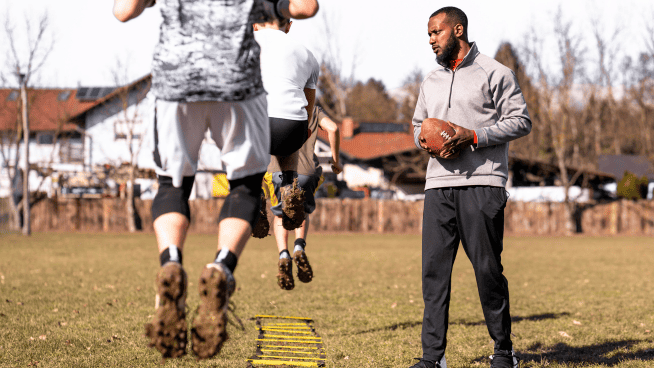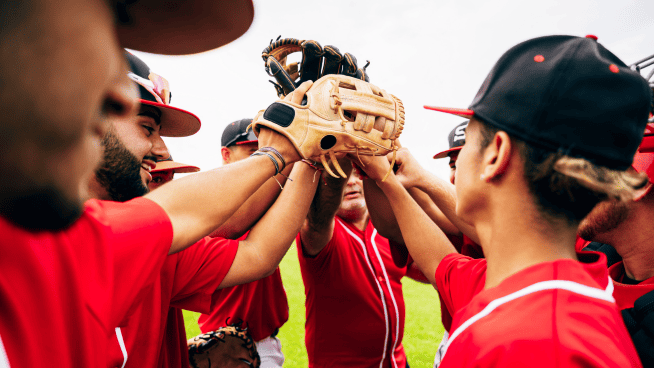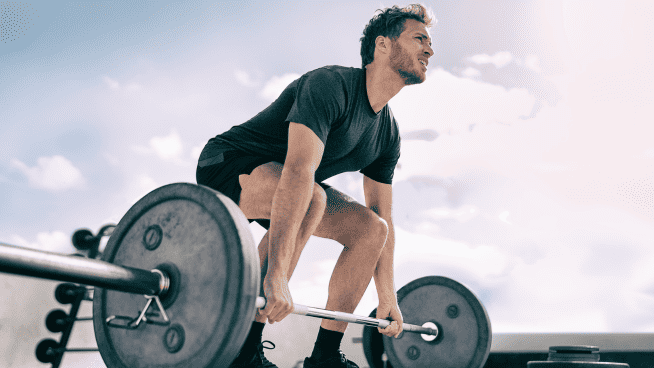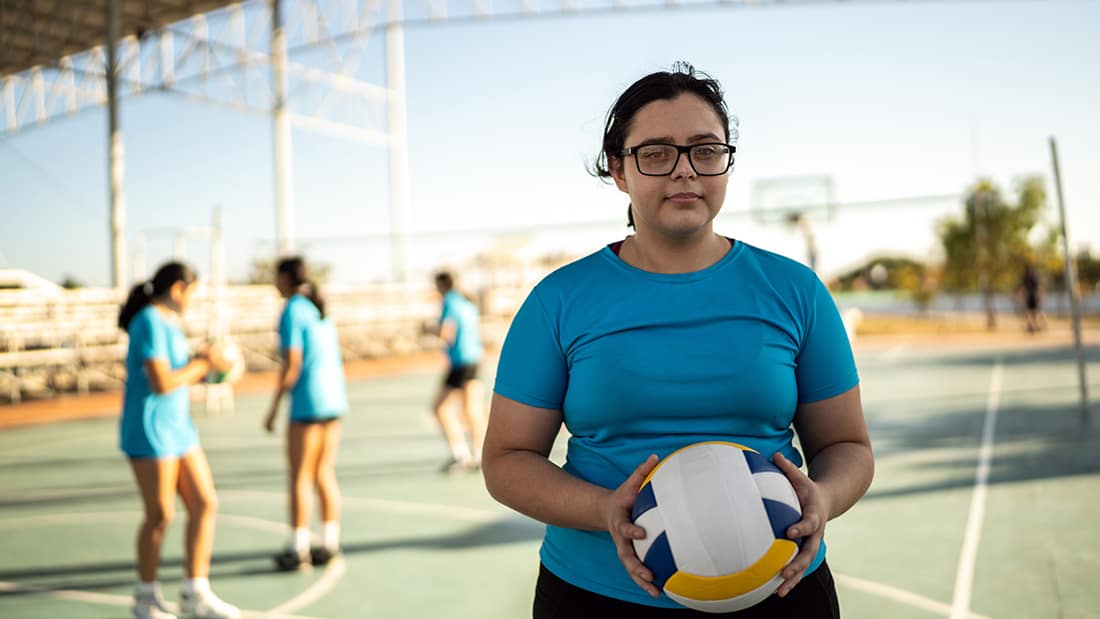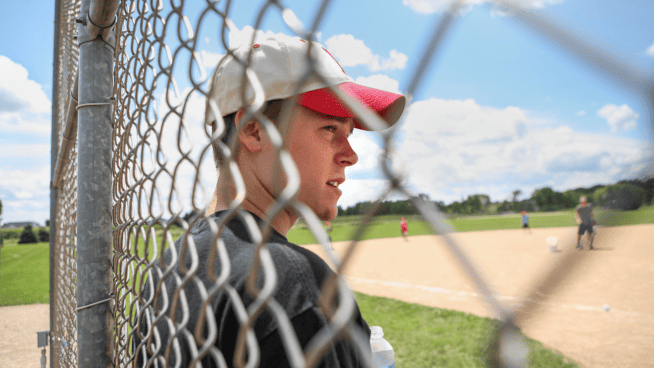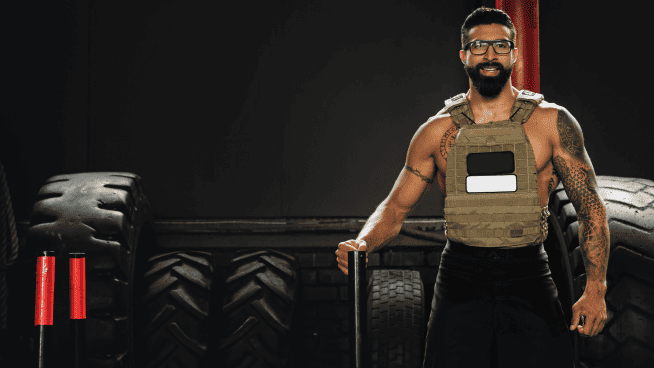Design Your Own High School Strength and Conditioning Program
Back in my high school days, my football coach had a pretty solid strength and conditioning program. Kids lifted and got stronger, and we had a pretty good run of success.
When I returned to my alma mater to do speed training and conditioning with the athletes, I developed my own ideas about what I like to see in a high school strength and conditioning program.
Assess and Track
Whether you do an elaborate assessment of your athletes’ movements and performance abilities or just chart two or three things, it’s important to track your team’s key performance indicators (KPI).
If you are a basketball coach, maybe you are tracking Vertical Jump, Pro Agility Runs and 300-Yard Shuttles.
If you are a football coach, maybe you’re using the 40-Yard Dash, Vertical Jump, and a 5-rep max bench test.
What you choose to use for assessment is not as important as tracking the numbers over time. If you have athletes going through your program, they should be able to improve their numbers consistently year over year. Record the data on a spreadsheet so you can see their progress and give your athletes real-time information on how they are improving and why they are doing what they’re doing.
Build Foundations
In any high school strength and conditioning program, you need to set the example as soon as possible.
Why is that athlete in the corner struggling with a weight he has no business using? Too often in chasing after a team-lift concept, we batch athletes into tiers that are too similar, and the kids at the bottom get discouraged and stop working.
A better approach is to offer an onboarding program for freshmen to build foundations. All incoming freshmen should get zero weight training until they can master all the movements with the bar alone. Goblet Squats, Split Squats, Lunges, Push-Ups, Chin-Ups, Rows and Planks are all staple exercises. Vertical Jumps and landings and basic sprint mechanics are in there, too.
No one should ever be in a rush with a young athlete. Often, doing the movement well is the biggest ticket to lifting more weight—not doing more weight right away.
Batching Athletes
Remember the testing from the first block and the foundational coaching from the second. This creates your batching system.
Group athletes with lower scores and training edge together. Mastery of the movements then dictates how high up the ladder they go in the future. Creating workout groups allows you to keep the weights similar enough that large groups can train together and you can focus on coaching and not just motivating
Giving athletes scores from 1 to 5 on your KPI tests and basic exercises (1 indicating full regression and 5 indicating high-level seniors), you have a basic formula for creating your batches of athletes.
Develop Support Systems
Technology makes it easier to conduct a large-scale program. In the past, a high school strength coach might have to work with nearly 100 athletes. Now you can design and share programs and track data on a system like Google Drive, and record proper technique and cues with a smartphone.
Want to make sure your athletes know what to look for in an RDL? Simply make the video presentation once while you coach the group, then pop it on YouTube. Years of demos will be done for you. Incoming freshman class? Just send them the videos in foundations and make them answer a short five-question quiz to see whether they watched them. Instantly, you have a way of coaching new athletes with proper technique before the first day.
Performance Training
Here is a quick rundown of what a program could look like. If you can run guys in waves, you can knock the whole team out in 2 hours.
Warm-Up
Practice the actions and motions that are most important to you. Make it sport-specific or blend the foundations class into the warm-up. Warm-ups don’t need to be elaborate. Get moving, get sweaty, work on the ground and standing up and get to work.
Power
Jumping in all directions. It really can be this simple. We want bulletproof athletes who can jump on two legs or one, and we want athletes who can produce force in as many directions as possible. A deep pool of power work in jumping can save knees and maximize abilties.
Speed
Sprint! Most kids don’t do enough 100-percent effort stuff. Let them do 3 to 6 max sprints and get them out. We do enough conditioning and multi-directional work in practice. If you have loads of time, you can make athletes faster in a lot of ways, but simply having them sprint as hard as they can will help a ton.
Strength
Follow the tenets laid out earlier. Stay simple and progress. Follow the order shown here, with power and speed work before the lift. This creates better athletes faster and reduces injuries.
Injuries
The best idea is to find a great physical therapist in the area and refer out. Second best, have your certified athletic trainer work closely with your athletes. Worst case, try and help the athletes learn good form and follow the progressions and ideas above. You’ll have fewer injuries to deal with.
Other Ideas
One of the biggest obstacles when coaching a large group is understanding how to organize. One way to manage this is to conduct waves of athletes through the sessions. Start one group in a warm-up while another starts power work, and so on. Each coach can man a station and move the athletes through quickly. Start a new group as often as you can manage. Have three coaches? You can start a new group every 30 minutes. With six coaches, every 15 minutes.
Technique is a critical issue in most schools. Most coaches know what they know from coaches they had or by reading articles like this one. That’s not enough. All coaches would benefit from a one-day seminar or by hiring a personal trainer to do a program with them so they can see proper technique in action. Kids doing terrible things to their spines and bodies is never OK.
RECOMMENDED FOR YOU
MOST POPULAR
Design Your Own High School Strength and Conditioning Program
Back in my high school days, my football coach had a pretty solid strength and conditioning program. Kids lifted and got stronger, and we had a pretty good run of success.
When I returned to my alma mater to do speed training and conditioning with the athletes, I developed my own ideas about what I like to see in a high school strength and conditioning program.
Assess and Track
Whether you do an elaborate assessment of your athletes’ movements and performance abilities or just chart two or three things, it’s important to track your team’s key performance indicators (KPI).
If you are a basketball coach, maybe you are tracking Vertical Jump, Pro Agility Runs and 300-Yard Shuttles.
If you are a football coach, maybe you’re using the 40-Yard Dash, Vertical Jump, and a 5-rep max bench test.
What you choose to use for assessment is not as important as tracking the numbers over time. If you have athletes going through your program, they should be able to improve their numbers consistently year over year. Record the data on a spreadsheet so you can see their progress and give your athletes real-time information on how they are improving and why they are doing what they’re doing.
Build Foundations
In any high school strength and conditioning program, you need to set the example as soon as possible.
Why is that athlete in the corner struggling with a weight he has no business using? Too often in chasing after a team-lift concept, we batch athletes into tiers that are too similar, and the kids at the bottom get discouraged and stop working.
A better approach is to offer an onboarding program for freshmen to build foundations. All incoming freshmen should get zero weight training until they can master all the movements with the bar alone. Goblet Squats, Split Squats, Lunges, Push-Ups, Chin-Ups, Rows and Planks are all staple exercises. Vertical Jumps and landings and basic sprint mechanics are in there, too.
No one should ever be in a rush with a young athlete. Often, doing the movement well is the biggest ticket to lifting more weight—not doing more weight right away.
Batching Athletes
Remember the testing from the first block and the foundational coaching from the second. This creates your batching system.
Group athletes with lower scores and training edge together. Mastery of the movements then dictates how high up the ladder they go in the future. Creating workout groups allows you to keep the weights similar enough that large groups can train together and you can focus on coaching and not just motivating
Giving athletes scores from 1 to 5 on your KPI tests and basic exercises (1 indicating full regression and 5 indicating high-level seniors), you have a basic formula for creating your batches of athletes.
Develop Support Systems
Technology makes it easier to conduct a large-scale program. In the past, a high school strength coach might have to work with nearly 100 athletes. Now you can design and share programs and track data on a system like Google Drive, and record proper technique and cues with a smartphone.
Want to make sure your athletes know what to look for in an RDL? Simply make the video presentation once while you coach the group, then pop it on YouTube. Years of demos will be done for you. Incoming freshman class? Just send them the videos in foundations and make them answer a short five-question quiz to see whether they watched them. Instantly, you have a way of coaching new athletes with proper technique before the first day.
Performance Training
Here is a quick rundown of what a program could look like. If you can run guys in waves, you can knock the whole team out in 2 hours.
Warm-Up
Practice the actions and motions that are most important to you. Make it sport-specific or blend the foundations class into the warm-up. Warm-ups don’t need to be elaborate. Get moving, get sweaty, work on the ground and standing up and get to work.
Power
Jumping in all directions. It really can be this simple. We want bulletproof athletes who can jump on two legs or one, and we want athletes who can produce force in as many directions as possible. A deep pool of power work in jumping can save knees and maximize abilties.
Speed
Sprint! Most kids don’t do enough 100-percent effort stuff. Let them do 3 to 6 max sprints and get them out. We do enough conditioning and multi-directional work in practice. If you have loads of time, you can make athletes faster in a lot of ways, but simply having them sprint as hard as they can will help a ton.
Strength
Follow the tenets laid out earlier. Stay simple and progress. Follow the order shown here, with power and speed work before the lift. This creates better athletes faster and reduces injuries.
Injuries
The best idea is to find a great physical therapist in the area and refer out. Second best, have your certified athletic trainer work closely with your athletes. Worst case, try and help the athletes learn good form and follow the progressions and ideas above. You’ll have fewer injuries to deal with.
Other Ideas
One of the biggest obstacles when coaching a large group is understanding how to organize. One way to manage this is to conduct waves of athletes through the sessions. Start one group in a warm-up while another starts power work, and so on. Each coach can man a station and move the athletes through quickly. Start a new group as often as you can manage. Have three coaches? You can start a new group every 30 minutes. With six coaches, every 15 minutes.
Technique is a critical issue in most schools. Most coaches know what they know from coaches they had or by reading articles like this one. That’s not enough. All coaches would benefit from a one-day seminar or by hiring a personal trainer to do a program with them so they can see proper technique in action. Kids doing terrible things to their spines and bodies is never OK.





